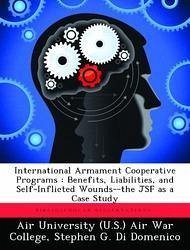
International Armament Cooperative Programs: Benefits, Liabilities, and Self-Inflicted Wounds--The Jsf as a Case Study
Versandkostenfrei!
Versandfertig in über 4 Wochen
52,99 €
inkl. MwSt.

PAYBACK Punkte
26 °P sammeln!
The Joint Strike Fighter international program is unique; indeed there is no other example of a U.S. major prime contractor co-developing and co-producing a U.S. combat aircraft with other foreign entities. Consequently, the program provides an excellent model to evaluate in view of the new Department of Defense international acquisition strategy requirements. This paper is a preliminary analysis that seeks to answer the questions: what are the benefits and liabilities of the JSF international acquisition approach thus far, and what are the necessary precursors or conditions that should exist ...
The Joint Strike Fighter international program is unique; indeed there is no other example of a U.S. major prime contractor co-developing and co-producing a U.S. combat aircraft with other foreign entities. Consequently, the program provides an excellent model to evaluate in view of the new Department of Defense international acquisition strategy requirements. This paper is a preliminary analysis that seeks to answer the questions: what are the benefits and liabilities of the JSF international acquisition approach thus far, and what are the necessary precursors or conditions that should exist for future international cooperative programs to have the best chance of success? Such answers are relevant given that DoD now looks to international armament cooperative programs as the first option for future weapon systems acquisition strategies. Finally, the paper will identify barriers that are 'hard-wired' into our acquisition regulations, policies and statues that restrict cooperation, fail to take advantage of the global defense industrial market, and are antithetical to our National Security Strategy coalition goals. The paper concludes with recommendations intended to improve the success for future international cooperative initiatives












